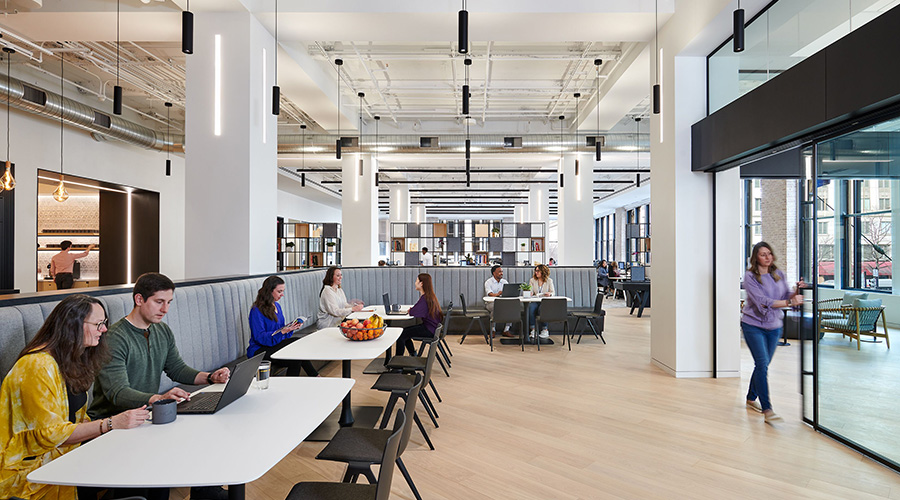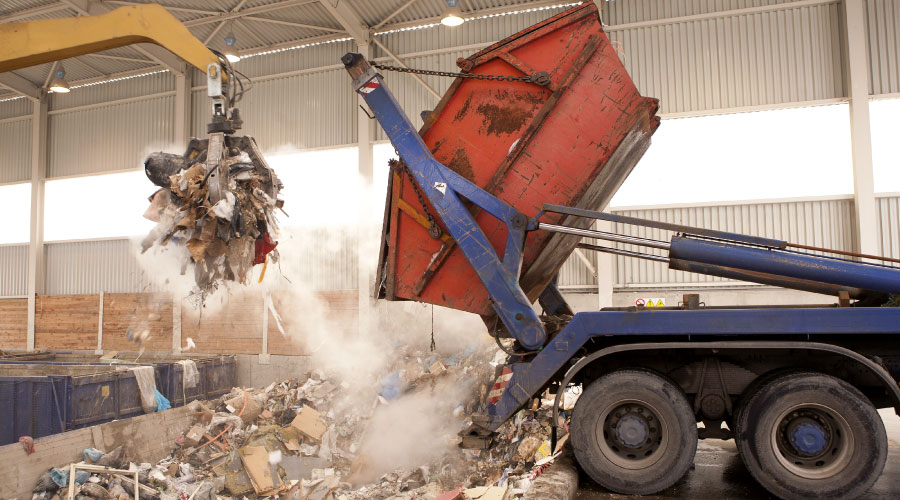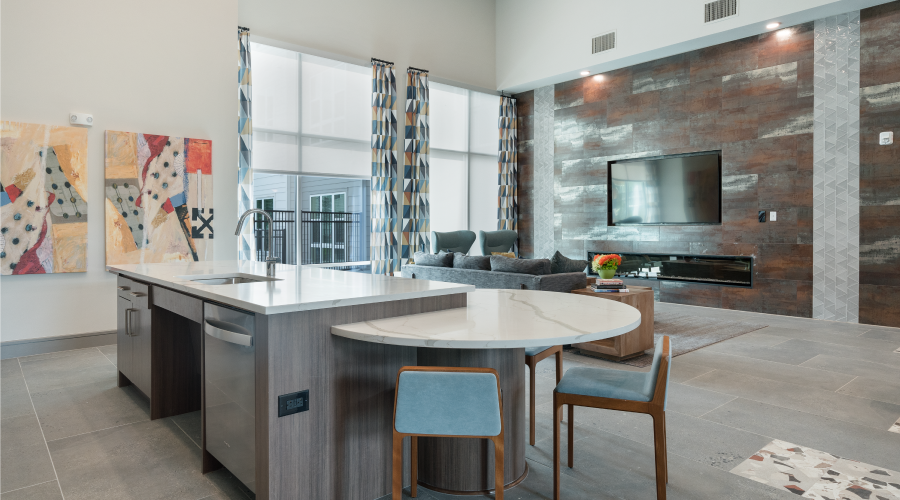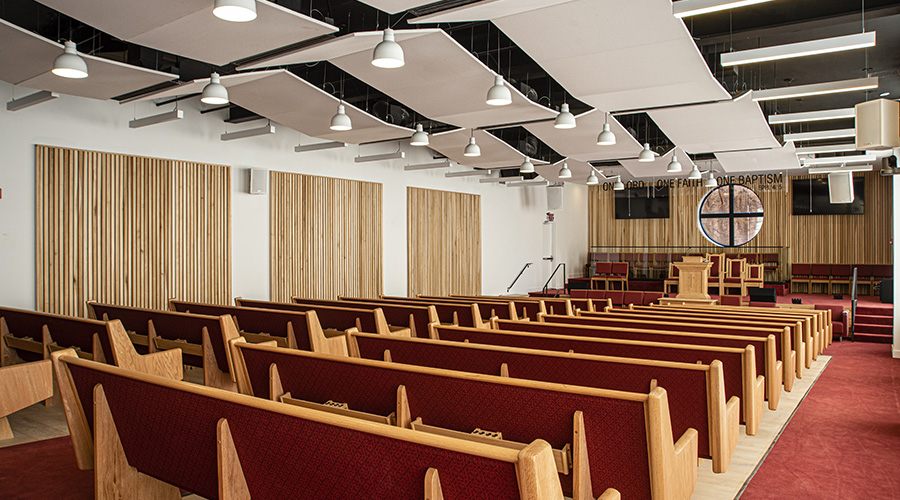Workplace Design Can Encourage Collaboration In Changing Office Environment
Collaboration is a popular theme for today's new work environment. Here are some ways workplace design encourages collaboration:
Fewer private offices. Some clients are eliminating private offices altogether — both to save space and to encourage a collaborative environment. Private offices that do remain may have glass walls added as a way to provide privacy with a sense of openness. Managers who initially balk at the idea frequently end up advocating the arrangement when they notice improvements in staff communication.
Fewer, smaller cubes. The cubicle is shrinking or even nonexistent. Workstations that previously were 80 to 100 square feet now average closer to 40 or 50 square feet. However, smaller doesn't necessarily mean cramped. Flat-screen monitors, laptop computers, and cell phones require much less space than their bulky predecessors. Increasingly, documents that formerly were printed and filed are available online, where they are not only easily accessible, but more up-to-date. This greatly reduces the need for filing space at workstations.
Lowered partitions. This opens up the space visually, encourages communication, and allows daylight to enter. Studies have documented increases in worker productivity in workspaces that allow in natural light. Lower partition heights can also contribute to LEED points as well as the ability to utilize daylight harvesting.
More group spaces. As workstations have gotten fewer and smaller, group spaces have grown in number and as a percentage of overall office space — in some cases, as much as double. These are not the traditional conference rooms for 12 people, which not only take up a lot of valuable space, but are frequently under-used, being used by only two or three people at a time, studies show. Instead, there are "enclave" spaces for one to three individuals who want to do a quick meeting or conference call, as well as "huddle" rooms for four to eight people. We also are adding informal gathering spaces throughout the office, such as a table where three or four employees can have a quick meeting.
New twists on office clichés. Traditional office gathering places such as the water cooler, coffee station, and vending machines are radically changing. Organizations have realized that informal information exchanges in these spots may be as valuable as a formal meeting. Mini cafés strategically located around the office, instead of being hidden next to the restrooms, typically include amenities like refrigerators, individually purchased coffee and tea, healthy snack choices, café-height tables, and even sofas or similar "soft seating" to encourage a quick conversation. Some companies are offering complimentary beverage and snack options or making them available for purchase via a system scanned onto employee ID badges.
Technology everywhere. Practically everyone is "wired" today for both professional and personal reasons. Which means that today's gathering spaces require access to technology — minimally, wireless connectivity, outlets wherever possible, and pre-wired flat screen monitors for presentations and sharing of work products. Office furniture manufacturers have addressed this trend by developing "media tables" that are either pre-wired or have paths for concealed wiring.
Related Topics:















